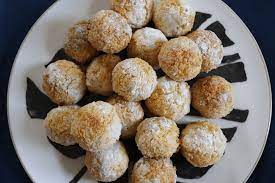A Taste of Africa: Leftover Turkey and Peanut Soup
Running out of ideas for using up all that leftover Turkey?
We make this fantastic Turkey & Peanut Soup, which we began making from an Emeril Lagasse recipe that is just incredibly good. Emeril uses ground turkey and, yes, at first we did too. Then, we realized that this soup would be a great way to use up leftover turkey and - VOILA! - our version came to fruition!

If you want to make Emeril's version, here's a link to his recipe on FoodNetwork. We love sharing our family recipes with you but please remember you can search online and find lots of variations on this dish and other terrific African recipes. An online recipe site we use over and over again is The Congo Cookbook. My East Africa Journal is also a great source for recipes. The combination of spices, peanut butter, coconut milk and sweet potatoes creates an amazing flavour. You can make some Fufu to go with this soup, but we pair it with a wide variety of things. Whether served or rice or dumplings, or with a side of salad or slaw and some lovely fresh bread or biscuits, this tummy-warming soup will become a family favourite, we're sure.
INGREDIENTS
- 2.5 tablespoons of peanut oil
- 1 tablespoon of curry powder
- 1/2 cup of coconut milk
- 2 medium sliced onions (around 3.5 to 4 cups). If you really like onions, use 4 cups
- 1/2 cup of chunky peanut butter (Don't use smooth, you really need the chunky for texture)
- 2 teaspoons of minced garlic
- 1/4 teaspoon of cayenne pepper
- 1/4 teaspoon of rough ground black pepper
- 2 large sweet potatoes (around 2 pounds) cut into largish bite-size chunks
- 1 teaspoon of salt
- 1 large (28 ounce) can of whole plum tomatoes (we break them up with our fingers - kind of "squish" them)
- 2 cups of chicken (or vegetable) broth
- 1 pound (approximately) of leftover turkey (you can mince it, or cut it into larger chunks if you wish - your choice)
Instructions
- Heat two tablespoons of your peanut oil in a big stockpot. Use medium/high heat only.
- Add the curry powder and stir for one minute.
- Add the onions and cook for about 2-3 minutes. Until onions begin to soften nicely.
- Then add the garlic and cook for another couple of minutes until everything is nicely blended.
- Now stir in your chicken broth, tomatoes and sweet potatoes and bring your mixture up to a boil.
- Reduce the heat a bit and simmer the soup with a cover on it for around half an hour.
- Add your turkey (either minced/diced or cut into small bite-sized chunks). Mix the turkey in well with the other ingredients.
- Now add your coconut milk and the salt, cayenne pepper and the peanut butter and stir well.
- Simmer for about 15 minutes and then season with salt and pepper to taste. We like a little more pepper.
This recipe is super simple to make and lends itself well to variations. We don't hesitate to add more tomatoes or a can of beans, just making sure we increase the broth a bit to compensate. It makes a good amount of soup (over 2 quarts) so you can feed a fair number of people at once or keep some to enjoy later. Enjoy! And please let us know how you enjoy this recipe and any creative culinary modifications you make.



















